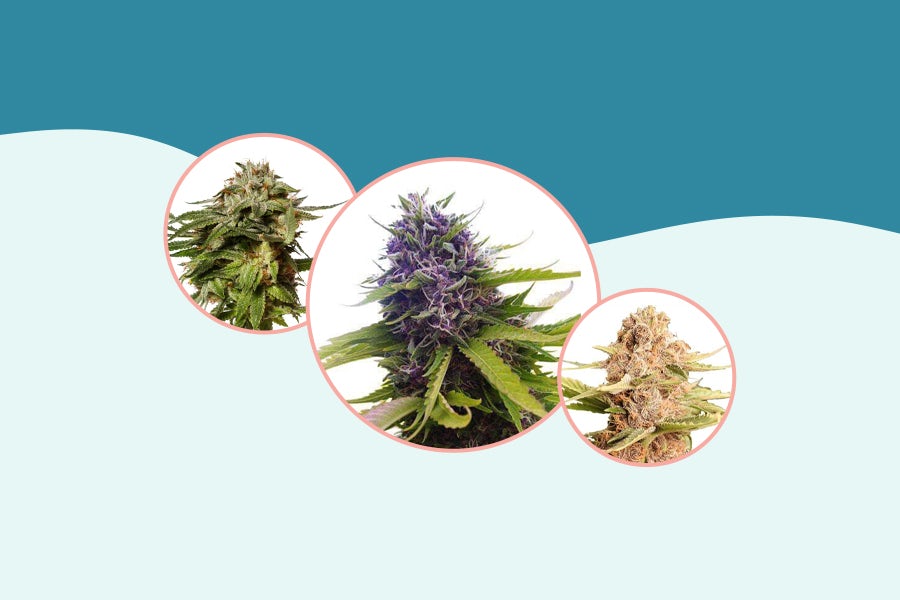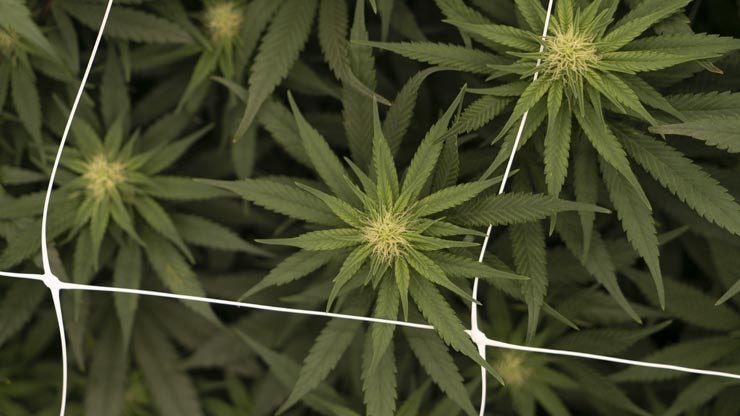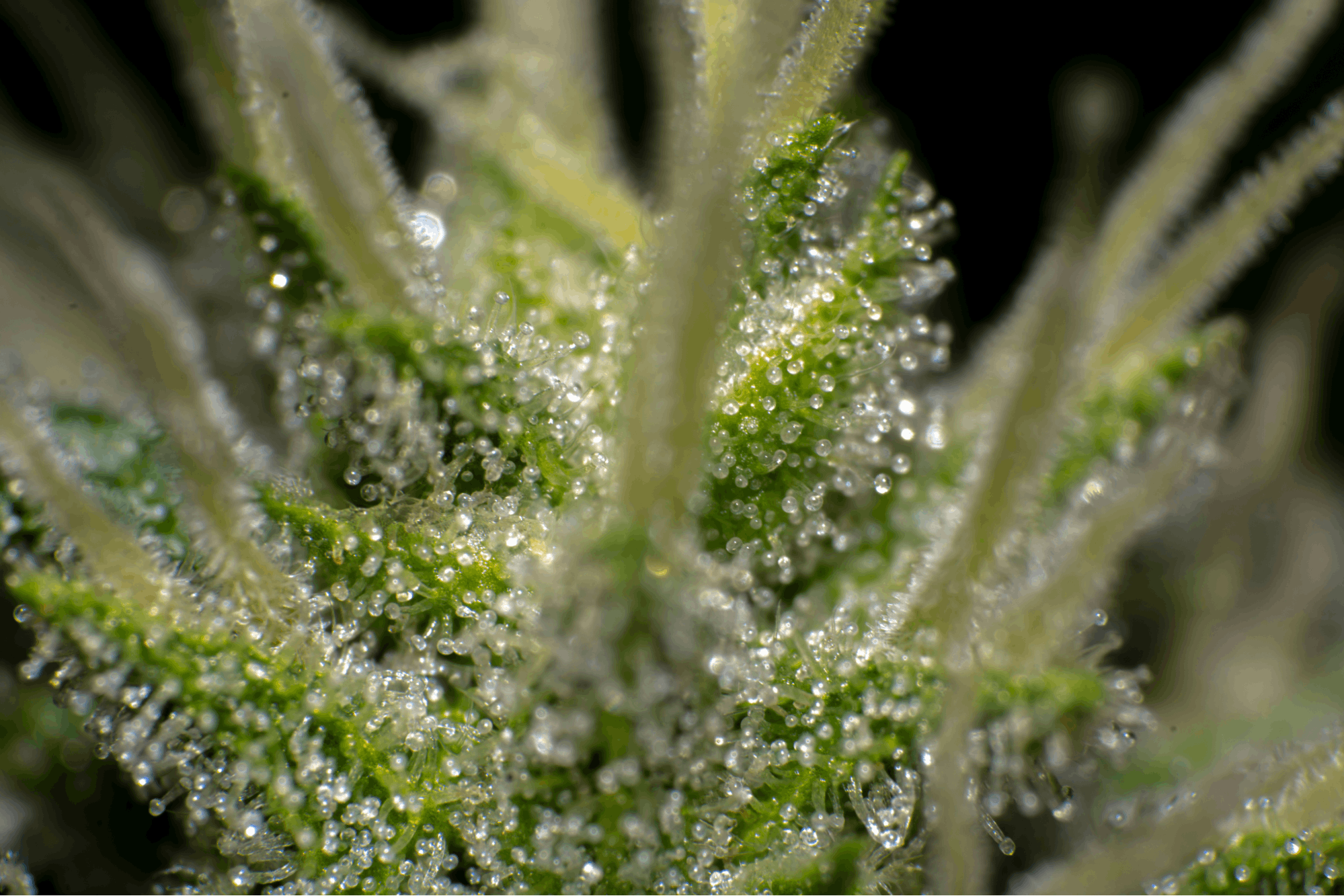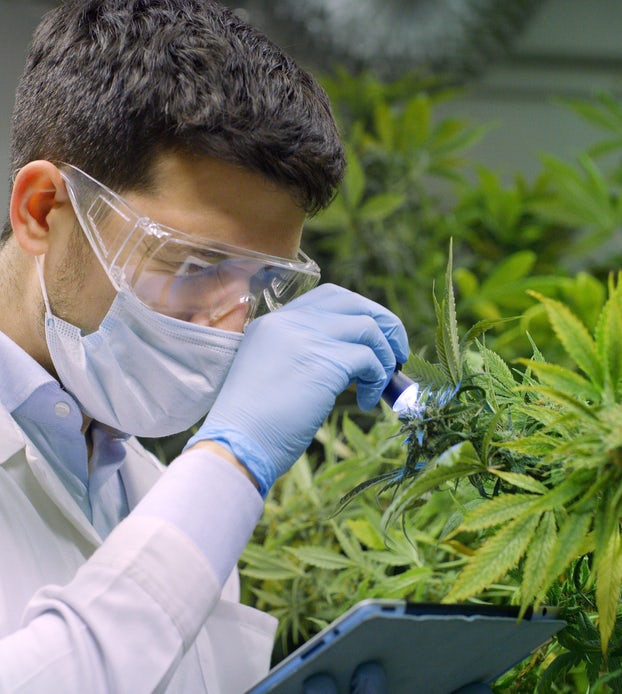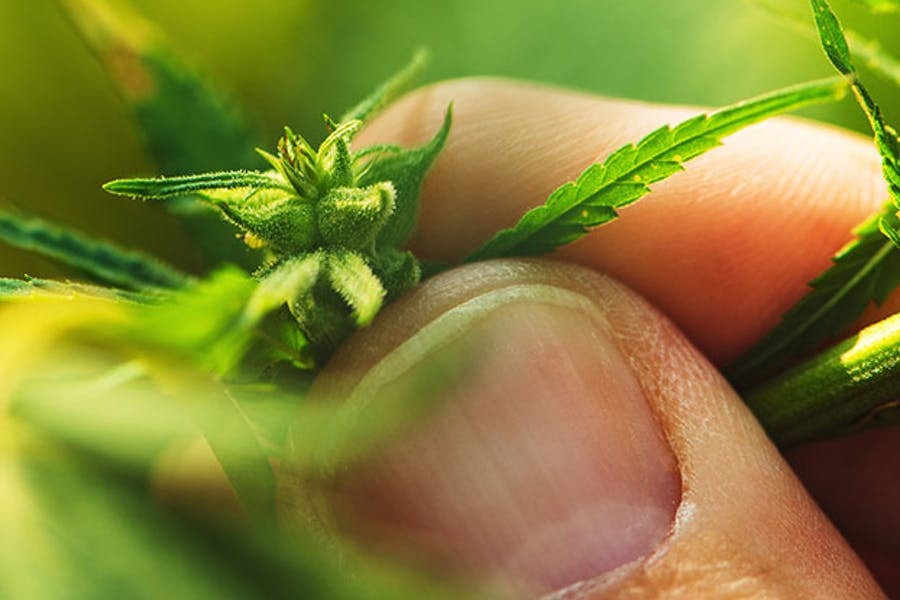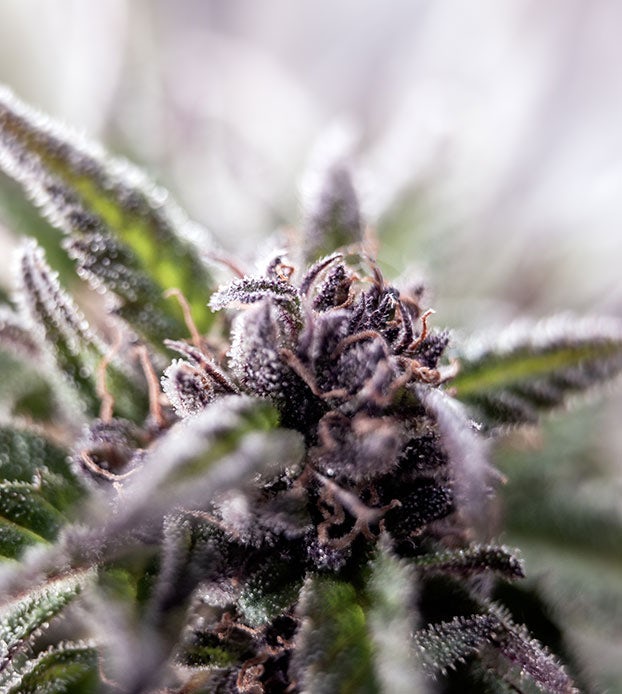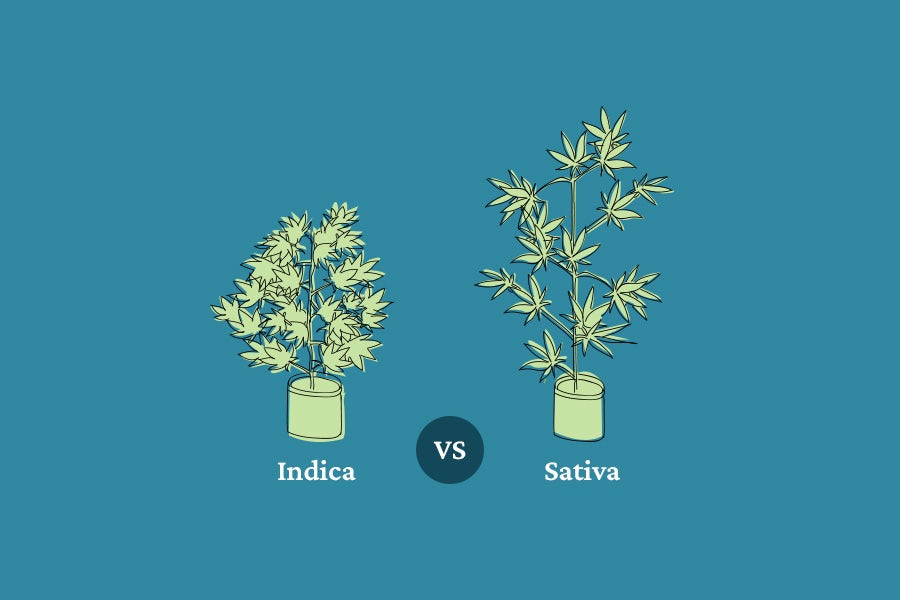Pruning isn’t “essential” for healthy cannabis growth, and when done incorrectly it can actually harm a cannabis strain. However, learning correct pruning techniques can help you reap higher rewards at harvest time. 1
Generally speaking, “pruning” refers to selectively snipping branches and leaves to enhance the plants’ microclimate by maximizing light exposure, nutrient use and air circulation. Cannabis cultivators can also prune parts of the plant that show signs of weakness, discoloration, or mold. 2 3
The general consensus among growers is that removing these branches will lead to increased yields by shifting the plants’ energy to producing healthier nugs. By creating more space, you are likely to increase the odds light will hit more cannabis bud sites. However, recent studies have shown the impact of pruning on cannabinoid and biomass yields are relatively small. 4 5
Nevertheless, pruning can help standardize the uniformity of cannabinoid content within the cannabis plant. Pruning cannabis plants also creates better airflow, which is always good news for controlling pests and pathogens. 6
Although pruning has many benefits for cannabis plants, it’s not without risks. Anyone new to using pruning shears should know when and how to use this tool to their advantage.
When’s the best time to prune cannabis plants?
No matter which pruning strategy you’re using, you should plan on completing your goals during the vegetative stage. Some advanced growers deliberately prune in the first few weeks of the flowering period, but this usually isn’t recommended as it can delay or even prevent flowering. 7
You should focus on pruning in the mid-to-late vegetative stage to avoid over-shocking your plant. No matter how careful you are, pruning will always put extra stress on the cannabis plant. The later you start pruning your pot, the less chance it will recover before putting its energy into flowering because you may accidentally remove the tissue responsible for sensing the environmental cues.
Every strain will have a different schedule for ideal pruning, but you can usually tell it’s time to prune when a strain has a bushy appearance with plenty of fan leaves. You should start to think about pruning cannabis about two weeks into vegetation.
You should also let your cannabis plant rest for about one week in between each pruning session.
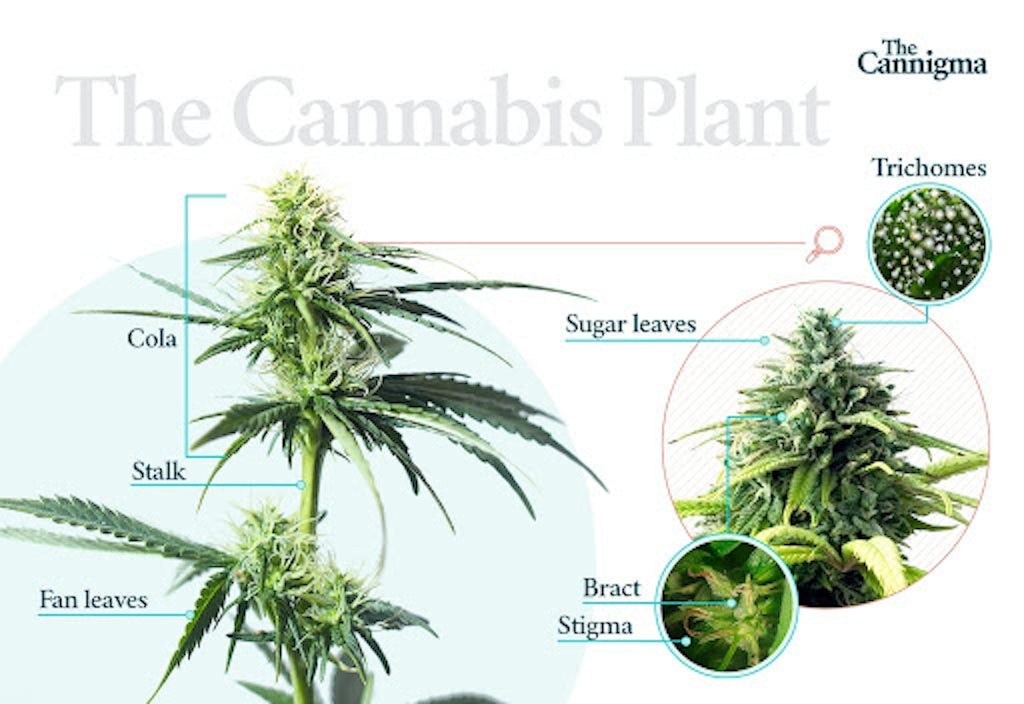
How to prune cannabis: a beginner’s guide to breaking branches
There are dozens of methods for pruning cannabis plants, and the most suitable technique depends on your ultimate objectives and cultivation practices, but here’s a decent beginner’s guide to keep in mind: 8
- Sterilize sharp pruning shears with an isopropyl alcohol wipe.
- Scan your plant for any dead or discolored leaves and remove these first.
- Determine which fan leaves or branches are obstructing airflow or light.
- Choose your first branch or fan leaf near the bottom of your plant.
- Carefully snip the branch at a 45° angle in a fast motion.
- Continue removing fan leaves or branches from your plant’s bottom and interior till you’re satisfied, keeping in mind that removing too many large green leaves may limit photosynthesis and therefore negatively impact yield.
- Remove any brown or yellow leaf material that has fallen onto the soil as this dead material may attract fungal attack.
- Never remove more than one-third of your cannabis plant in one session.
When to top cannabis plants
While the list above should work for most cannabis growers, a few more involved pruning strategies have become commonplace in cannabis circles.
Arguably, “topping” is the most popular (and aggressive) pruning technique. With this strategy, growers snip the future site of the central cola, usually above the fifth node.
When done correctly, topping will create two central colas that branch out to the sides. This is because the main stem produces a hormone called auxin which inhibits branching. With the main stem removed, auxin is no longer produced and lateral branching can press ahead. Not only will this double your plant’s cola production, it helps promote even light penetration and gives your plants a shorter and “bushier” structure. 9 10
Whatever style of pruning you use on your plants, it’s essential to keep your shears as clean and sharp as possible. Dull and dirty pruning shears could easily trigger a bacterial infection.
Take note that pruning is an inherently stress-inducing technique. Your cannabis plants will have the best chance of recovery if you use precise cuts with the sharpest and cleanest shears imaginable.
What you should know before pruning marijuana plants
Unless you’re already familiar with gardening, it may take a few tries to get a feel for pruning cannabis flowers. While there are basic tips associated with pruning, the techniques you’ll employ depend on your comfort level and the unique growth pattern of your strain.
- If you are interested in pruning cannabis, you should start with basic techniques like removing obstructive fan leaves and branches in the bottom and interior of the plant.
- Start with just one or two snips during early vegetation, and be sure to pay careful attention to your plant’s health.
- Always let your cannabis plant rest after a pruning session, and never break out your shears again if your plants don’t look robust.
It’s also worth mentioning there are low-stress alternatives to pruning. For instance, many cannabis fans enjoy using training techniques like ScrOG, Sea of Green, or bending to achieve better light penetration without causing severe stress.
Sources
- Crispim Massuela, D., Hartung, J., Munz, S., Erpenbach, F., & Graeff-Hönninger, S. (2022). Impact of Harvest Time and Pruning Technique on Total CBD Concentration and Yield of Medicinal Cannabis. Plants (Basel, Switzerland), 11(1), 140. https://doi.org/10.3390/plants11010140
- Jin D, Jin S, Chen J (2019) Cannabis Indoor Growing Conditions, Management Practices, and Post-Harvest Treatment: A Review. American Journal of Plant Sciences 10: 925-946
- Wen Y, Zhang Y, Su S, Yang S, Ma L, Zhang L, Wang X (2019) Effects of Tree Shape on the Microclimate and Fruit Quality Parameters of Camellia oleifera Abel. Forests 10: 563
- Crispim Massuela D, Hartung J, Munz S, Erpenbach F, Graeff-Hönninger S (2022) Impact of Harvest Time and Pruning Technique on Total CBD Concentration and Yield of Medicinal Cannabis. Plants 11: 140
- Danziger N, Bernstein N (2021) Plant architecture manipulation increases cannabinoid standardization in ‘drug-type’ medical cannabis. Industrial Crops and Products 167: 113528
- McPartland JM, Clarke RC, Watson DP (2000) Hemp diseases and pests: management and biological control: an advanced treatise. CABI
- Clarke RC (1981) Marijuana Botany An Advanced Study: The Propagation and Breeding of Distinctive Cannabis.
- Backer R, Schwinghamer T, Rosenbaum P, McCarty V, Eichhorn Bilodeau S, Lyu D, Ahmed MB, Robinson G, Lefsrud M, Wilkins O, Smith DL (2019) Closing the Yield Gap for Cannabis: A Meta-Analysis of Factors Determining Cannabis Yield. Frontiers in Plant Science 10
- Clarke RC (1981) Marijuana Botany An Advanced Study: The Propagation and Breeding of Distinctive Cannabis.
- Eichhorn Bilodeau Samuel, Wu Bo-Sen, Rufyikiri Anne-Sophie, MacPherson Sarah, Lefsrud Mark, An Update on Plant Photobiology and Implications for Cannabis Production, Frontiers in Plant Science, 2019, https://www.frontiersin.org/article/10.3389/fpls.2019.00296, 10.3389/fpls.2019.00296
Sign up for bi-weekly updates, packed full of cannabis education, recipes, and tips. Your inbox will love it.

 Shop
Shop Support
Support
